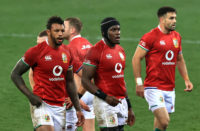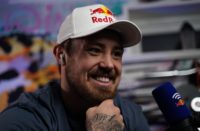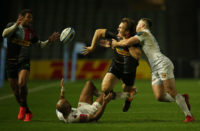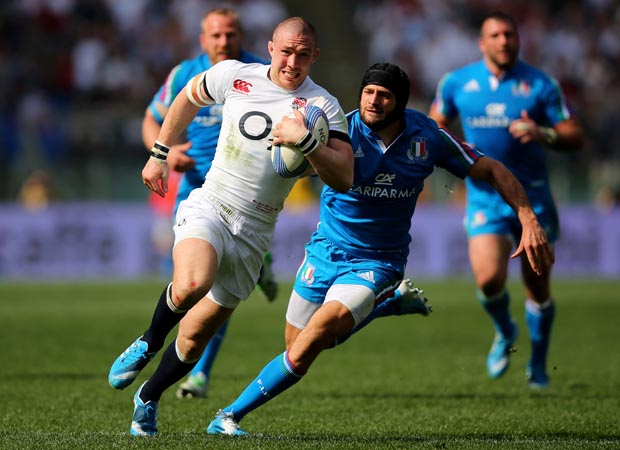 Selecting a 2014 Lions side confirms more than anything just how long a year in rugby can be. If the Lions were bound for New Zealand this summer it would be no mirror image of the 2013 outfit that 12 months before recorded the first series win by the iconic touring side in 16 years by beating Australia.
Selecting a 2014 Lions side confirms more than anything just how long a year in rugby can be. If the Lions were bound for New Zealand this summer it would be no mirror image of the 2013 outfit that 12 months before recorded the first series win by the iconic touring side in 16 years by beating Australia.
Based on the evidence in front of us in the Six Nations, the likelihood is that, with long-term injuries, retirements and form taken into account, only five of the players in the starting line-ups from the 2013 Lions series against the Wallabies could expect to be in the same Test shirt this time.
This was a theme identified by Warren Gatland earlier this month. The 2013 Lions head coach saw the writing on the wall as he surveyed his Wales side in the week before their clash with England. He said, “If you were picking a Lions team tomorrow it would be completely different to what we had 12 months ago.”
Gatland continued, “The balance would be fairly even between the three countries (England, Wales and Ireland). Where there was probably a few more Welsh players, I think you'd see more Irish players in the team and a few more English players, and probably not quite as many Welsh.”
He also reflected, after Wales' 26-3 drubbing by Ireland in Dublin in the opening round, how hard it is for any side to peak continuously: “Because a lot of those Welsh players have had a lot of rugby in the last 18 months – they've had some big games and big occasions in terms of a 2012 Grand Slam, a 2013 Six Nations (title) and a Lions tour – it's almost as if they're in the middle of having to get themselves up mentally.”
Gatland showed sound judgement, even though the English merited more than ‘a few' additions. Soon afterwards an England side containing just two of the 2013 Lions squad beat a Welsh side consisting of no fewer than 14 Wallaby-beaters – ten of whom were starters in the final Test in Sydney.
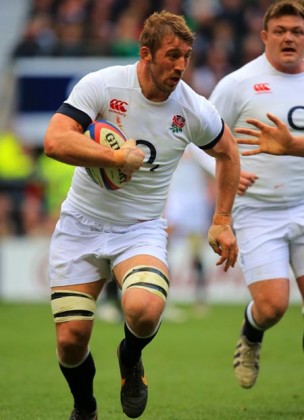
The fact that the English were convincing winners – just as the Irish had been – emphasised that the speed of change in international rugby is not far off that of a tyre pit-stop in Formula 1. By the end of the Six Nations players who were barely on the international map when the Lions triumphed in Sydney had become Test contenders.
Foremost among them is Luther Burrell, whether at 12 or 13. The Northampton centre not only finished the Six Nations as the joint second highest try-scorer, with three – three more than the venerable Brian O'Driscoll – but also helped to transform England's attack so that it rivalled Ireland's as the most potent in the Championship.
With the march of time and retirement putting O'Driscoll out of the equation, Gatland – assuming he remains as head coach following victory in Australia – has the option of pairing Burrell with Jonathan Davies, Jamie Roberts or Billy Twelvetrees. On the evidence of the last ten weeks the Burrell-Davies combo wins through for the versatility, power and skill both centres bring.
Another English bolter is Mike Brown. Whether try-scoring – he finished joint top of the table on four with Jonny Sexton – defenders beaten, metres gained, or sheer sustained excellence, the Harlequins full-back fully deserved his Player of the Championship award.
Even if Leigh Halfpenny had not been ruled out by the shoulder injury sustained in stopping Burrell from scoring late on at Twickenham, the 2013 Lions Player of the Series would have been hard pressed to resist Brown's challenge. The same is true of Rob Kearney, whose impressive displays for Ireland would have been good enough in most years for him to be the front-runner at 15. Not this time, although he and Scotland's Stuart Hogg give the Lions enviable depth.
On the wings neither English contender, Jack Nowell nor Jonny May, did nearly enough to be in Test contention, and they struggle to make the tour party. George North is a prodigious talent who remains one of the first names on the team sheet, while Andrew Trimble's return to form and sharp running earns him a place. I would reserve another for Leinster's multi-talented 2009 Lions Test wing, Luke Fitzgerald, and also have Alex Cuthbert in the squad.
The starting half-back pairing is a mix-and-match of Danny Care at scrum-half and Sexton at fly-half. Care's creator-cum-executioner role around the fringes for England has propelled him to the top of the rankings at No.9, while Sexton's ability to link more smoothly with his backline as well to take gaps and cut for the line himself puts him ahead of Owen Farrell.
However, Farrell's superior goal-kicking could be a crucial selection factor, especially in Halfpenny's absence. A back-up Anglo-Irish 9-10 combination of the powerful Conor Murray with Farrell would give Gatland a goal-kicking option in the event that Sexton lacked accuracy.
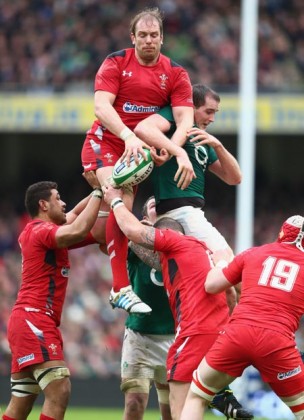
Alun Wyn Jones
As for the forwards, the Irish had the best scrummaging unit in the Six Nations, and, with England, the best lineout. That puts Cian Healy at loose-head and Mike Ross at tighthead as the front-runners. Healy is now a force in the scrum as well as around the pitch, while the new scrummaging laws clearly suit Ross. By comparison Adam Jones has not looked comfortable with them, and while David Wilson does not have Jones' pedigree he is technically more correct.
The rapid gains made by Joe Marler establishes him as Healy's main competitor, especially with Gethin Jenkins having difficulty coming to terms with non-hit scrummaging.
At hooker Dylan Hartley is neck-and-neck with Rory Best in terms of lineout accuracy, marginally behind him in terms of hooking, but the bigger force around the field – which gives the English No.2 the edge. Injury has also excluded the Lions incumbent, Richard Hibbard, while Tom Youngs' hooking and throwing issues have knocked him down the pecking order.
The second row is one of the most keenly contested areas with Courtney Lawes, Alun Wyn Jones, Devin Toner, Joe Launchbury and Paul O'Connell all in the mix. My preferred pairing would be Lawes, whose rugged athleticism never faltered for England, and AW Jones, the 2013 Lions stand-in captain whose determination kept Wales in the chase at Twickenham longer than they merited. However, there are also big, skilful units on the bench with Launchbury and the giant Toner the coming men.
The back row, always an area of All Black strength, does not glitter quite so brightly – but that is offset by the huge competition among players who are separated by very little.
At No.8 Jamie Heaslip is a Test Lion but not as conspicuous a carrier as he was. However, he has ladles of experience, whereas Billy Vunipola is at the opposite end of the spectrum – a Test novice with explosive power. The other 2013 Lions Test No.8, Toby Faletau, does not always find the ‘on' switch, but when he does, watch out. The same is true of Ben Morgan.
Picking Heaslip and Vunipola would be an option that could bring you the best of worlds, and also the option of sometimes putting the Saracens powerhouse at No.6.
Other competitors for the blindside flanker shirt are Peter O'Mahony, Tom Wood, Test Lion Dan Lydiate, and Scotland's David Denton. Each of them has a particular strength – O'Mahony as a breakdown spoiler, Wood for his line-out expertise, Lydiate for his ankle-cutter tackling, Denton as a support runner – but the form men have been O'Mahony and the rangy Wood.
At openside Sam Warburton's injury, as well as that to Sean O'Brien, leaves the field clear for Chris Robshaw to press his claims. Over the course of the Six Nations the England captain was marginally more visible and influential than his Irish rival, Chris Henry, and his work-rate and handling could not be faulted.
Whether Robshaw has done enough to persuade Gatland that he has the pace for the No.7 role – the reason he was excluded a year ago – or the scavenging instincts at the breakdown, is another matter.
What might help to persuade him is that Robshaw has always acquitted himself well when Richie McCaw has been the man opposite, and that is a solid recommendation to at least give him a go. He could also rest assured that if Robshaw was not the answer at openside, he certainly could be at blindside.
Irrespective of the back-row permutations it is a side with form, power, pace, a good blend of experience and youth, and depth in almost every position. That should be enough to give even the All Blacks pause for thought.
2014 LIONS: Brown (E); Trimble (I), Davies (W), Burrell (E), North (W); Sexton (I), Care (E); Healy (I), Hartley (E), Ross (I), AW Jones (c) (W), Lawes (E), Vunipola (E), Robshaw (E), Heaslip (I).
Replacements: Best (I), Marler (E), A Jones (W), Launchbury (E), Henry (I), Murray (I), Farrell (E), R Kearney (I).


